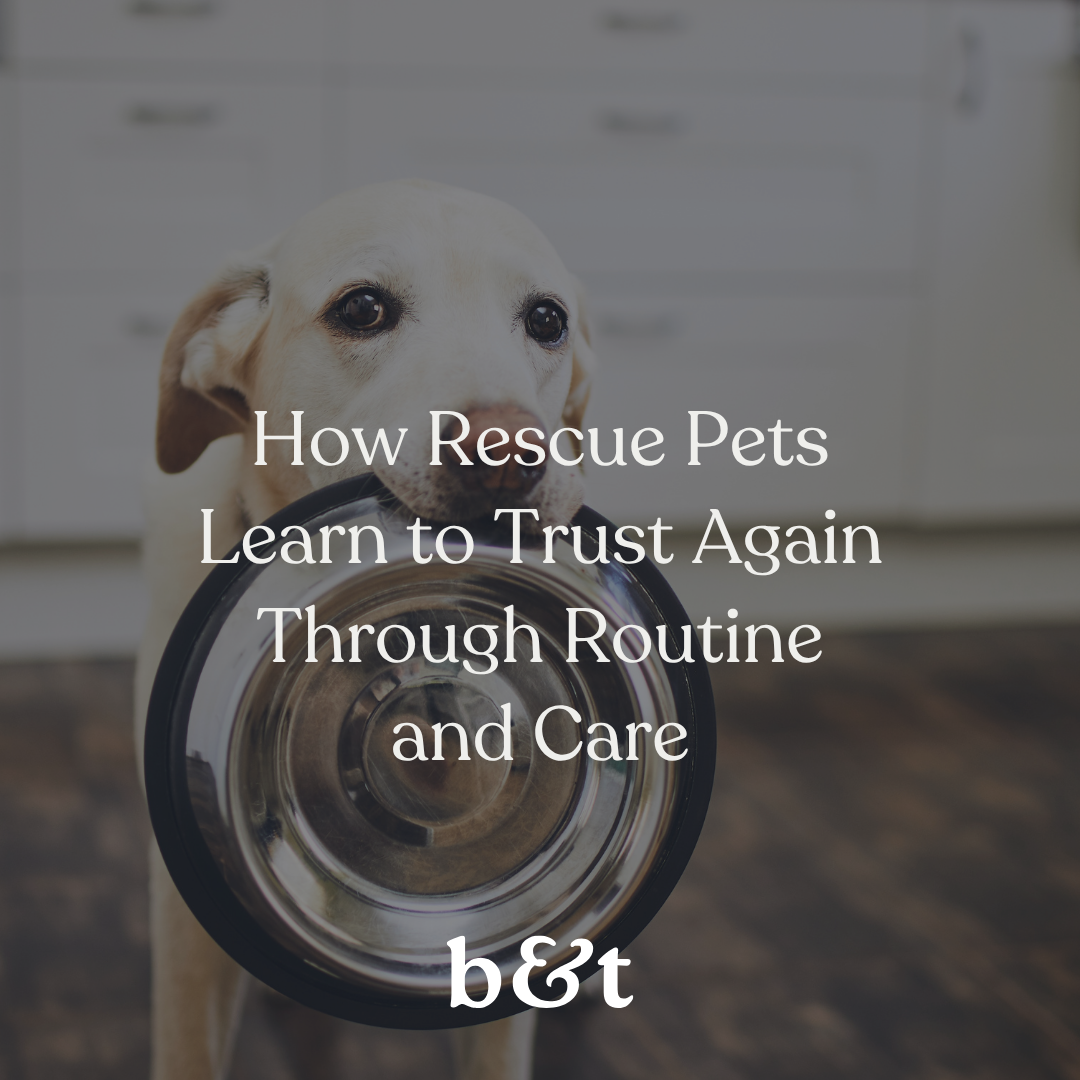
How Rescue Pets Learn to Trust Again Through Routine and Care
Through Routine, Patience, and Everyday Care
Not all pets arrive in our lives with an open heart.
Some come guarded.
Cautious.
With pasts they can’t tell us, but carry in every flinch, every silence, every glance that says, “Can I trust you?”
And we answer — not with words, but with time.
At Beats and Tails, we believe healing happens slowly, through the smallest, most intentional acts of care. For rescue pets, trust isn’t given. It’s built — day by day, meal by meal, moment by moment.
Here’s how routine and care become a path back to safety — and eventually, love.

1. The Trauma You Don’t See
Many rescue pets have known fear.
Not always in obvious ways — but in uncertainty, neglect, instability. The absence of love leaves marks, even when there are no scars.
They may:
-
Freeze or flinch at sudden movement
-
Avoid eye contact or physical touch
-
Hide, growl, or lash out when overwhelmed
-
React to voices, objects, or tones they associate with the past
-
Struggle to eat, sleep, or relax
These behaviors are not signs of disobedience — they are protection.
2. Why Routine Is Their First Safe Space
In a world that once felt unpredictable, routine becomes safety.
Feeding at the same time each day.
Brushing after walks.
Soft words at bedtime.
Each repeated ritual says: “This is your new normal. It’s calm here. It’s safe here.”
Consistency tells your rescue pet:
You won’t be forgotten.
You don’t have to guess.
You matter enough for rhythm and care.
3. How Gentle Care Rebuilds Trust
Trust isn’t about doing more — it’s about doing less, with intention.
Start small:
Sit near them, not too close. Let them come to you.
Offer treats by hand, but let them choose.
Touch should be offered — never taken.
Make grooming sensory, not stressful:
Use a gentle brush. Whisper. Let your energy lead.
Even one stroke, repeated daily, becomes a form of communication.
Acknowledge their “no”:
If they pull away, pause. If they growl, listen.
Respect builds more trust than constant affection ever could.
4. Celebrate the Quiet Wins
-
The first time they eat in front of you
-
A tail that starts to wag or curl softly
-
The first blink, lean, or brush against your leg
-
The moment they fall asleep in your presence
These are milestones, not small things.
They mean: “I’m beginning to believe this might be home.”
5. Healing Isn’t Linear — But It’s Real
There will be setbacks.
A noise, a memory, a strange scent that brings them back.
But with patience, empathy, and consistency, your rescue pet will begin to unlearn fear and remember what safety feels like.
They’ll start to expect love.
And one day — not loudly, but honestly — they’ll give it back.
Final Thought: Trust Grows in Quiet Places
Rescue pets don’t need to be “fixed.” They need to be understood.

They need someone who doesn’t rush the process. Who honors the space between trauma and trust. Who shows up — every single day — with soft hands and a softer heart.
Because in the end, the greatest rescue is mutual.
And when they finally choose to curl beside you, eyes closed, heart open — you’ll know:
They’re home.
And so are you.

